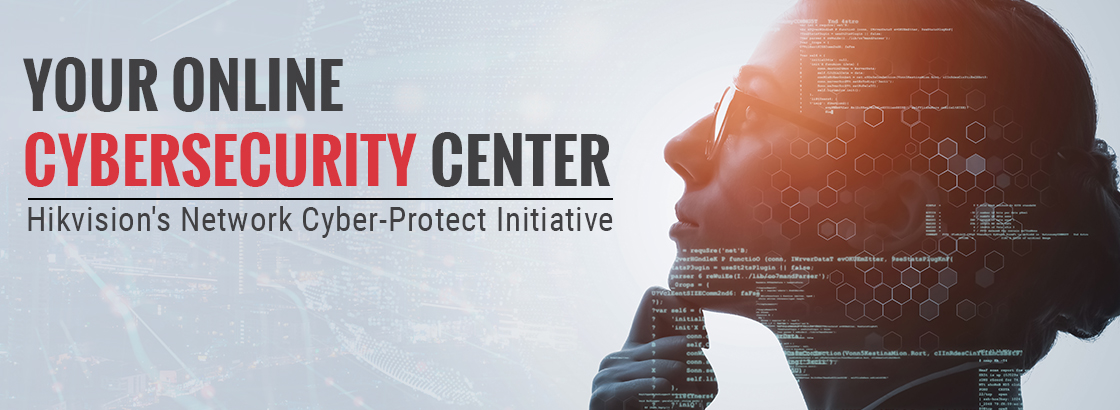Hikvision Network Cyber-Protect Initiative Helps Ensure Physical Cybersecurity Protection
Combines Technology, Education and Tools to Help Dealers Protect Networked Security Systems

City of Industry, Calif. (February 22, 2022) – Hikvision, a global leader in delivering high-performance professional security solutions with tremendous value, has launched a comprehensive cybersecurity support initiative called Network Cyber-Protect to help industry professionals and Hikvision dealers safeguard their physical security network infrastructure from malicious and costly cyber-attacks. A prevalent problem and growing challenge for security professionals across every vertical market is a threat to actors who have found that misconfigured or poorly secured IoT devices are vulnerable to hacks.
“While cybersecurity is everyone’s responsibility, as a manufacturer it is important to communicate succinctly with the people who use and install your products and software to help them maintain cyber-secure systems. Hikvision creates and disseminates content about Hikvision’s security devices as well as educational information to help people better secure their entire digital world,” said Hikvision’s Senior Director of Cybersecurity, Chuck Davis. Davis added that “the mission of the physical security industry is to make the world a safer place, and the goal of providing cybersecurity information is to better secure the world from digital threats.”
A new and improved online Cybersecurity Center has been launched to enable dealers, end-users, and partners to easily access the Hikvision Network Cyber-Protect resources, providing fast and convenient access to cybersecurity information, tools, and references. This center is a free and open resource available for anyone who wants to address cybersecurity. It does not require individuals’ login to access Hikvision resources to expand their digital and surveillance system cybersecurity knowledge.
The Hikvision Network Cyber-Protect initiative was developed by Hikvision’s internal cybersecurity specialists and is supported by partnerships with third-party experts to identify proactive measures to help safeguard against attacks. The new initiative is built on a combination of cybersecurity technologies, certifications, and tools, as well as education on best practices to help systems integrators and end users take a proactive stance against cyberattacks. Educational tools include access to a six-part cybersecurity course led by Hikvision’s cybersecurity experts which covers everything from product cybersecurity to vulnerabilities, and security in practice for physical security practitioners.
From a technology perspective, Hikvision surveillance and access control products comply to several stringent standards including:
- ISO 27001, the internationally recognized information security management standard
- ISO 9001:2008, the standard for quality management measured by customer satisfaction and compliance with regulatory requirements
- CMMI Level 5, a process level improvement training and appraisal program developed at Carnegie Mellon University required by many U.S. Government contracts, especially in software development
- American Institute of CPAs’ System and Organization Controls for network security audit which attests to the trustworthiness of services provided to assess the risks associated with outsourced software solutions that store customer data online
- FIPS 140-2 Level 1 Certification for use in IP cameras and DVRs
The Hikvision Network Cyber-Protect initiative has earmarked a series of ongoing activities to support the company’s physical cybersecurity support initiatives. These activities include network penetration testing by leading cybersecurity experts; partnerships with third parties such as Rapid7 for penetration testing to assess, evaluate and identify security weaknesses by simulating real-world attacks on an organization’s people, processes, and technology; a new physical cybersecurity series of webinars for end-users and systems integrators/installers; collateral material including white papers, technical bulletins, tip sheets, FAQs and reference guides; and more.
“Our customers, partners and reputation as respected and valued providers of high performance, high-value surveillance and security solutions are amongst our most valued assets. Hikvision’s Network Cyber-Protect is one of several initiatives we will be launching in 2022 to further demonstrate and maintain trustworthiness with our growing base of users and security professionals across the industry,” said John Xiao, Vice President Marketing, Hikvision USA.
Xiao added that Hikvision has historically been recognized by the professional security community and media for addressing vulnerabilities quickly and providing cybersecurity protections to help safeguard mission critical surveillance and security systems, and the network infrastructure where they reside.
To explore resources, visit the : new Cybersecurity Center on the Hikvision website
About Hikvision
Hikvision is a world leading manufacturer and supplier of security products and solutions. Featuring an extensive and highly skilled R&D workforce, Hikvision manufactures a full suite of comprehensive products and solutions for a broad range of vertical markets. In addition to security, Hikvision extends its reach to smart home tech, industrial automation, and automotive electronics industries. Hikvision solutions provide powerful business intelligence for end users, which can enable more efficient operations and greater commercial success. Hikvision encourages partners to take advantage of its many cybersecurity resources, such as the Hikvision Cybersecurity Center. For more information, please visit us at www.hikvision.com.
